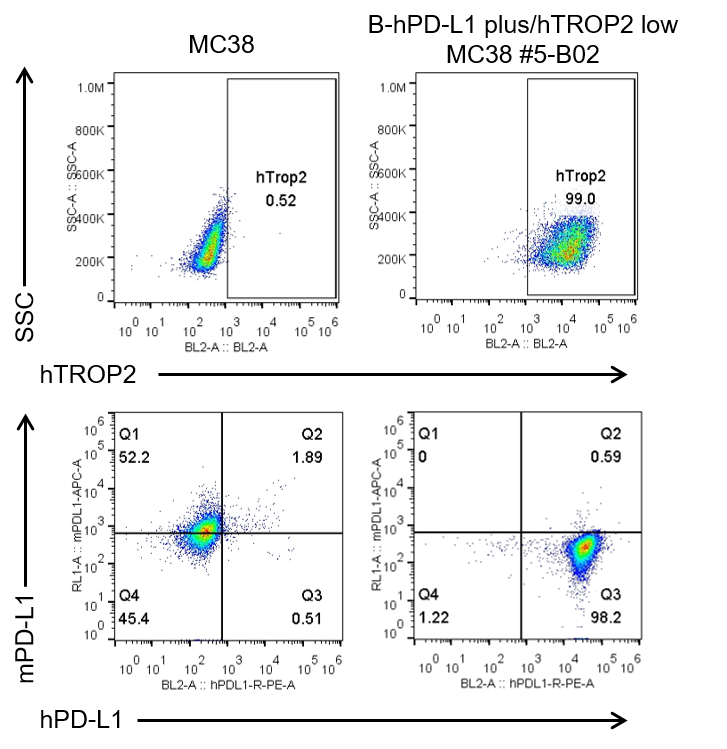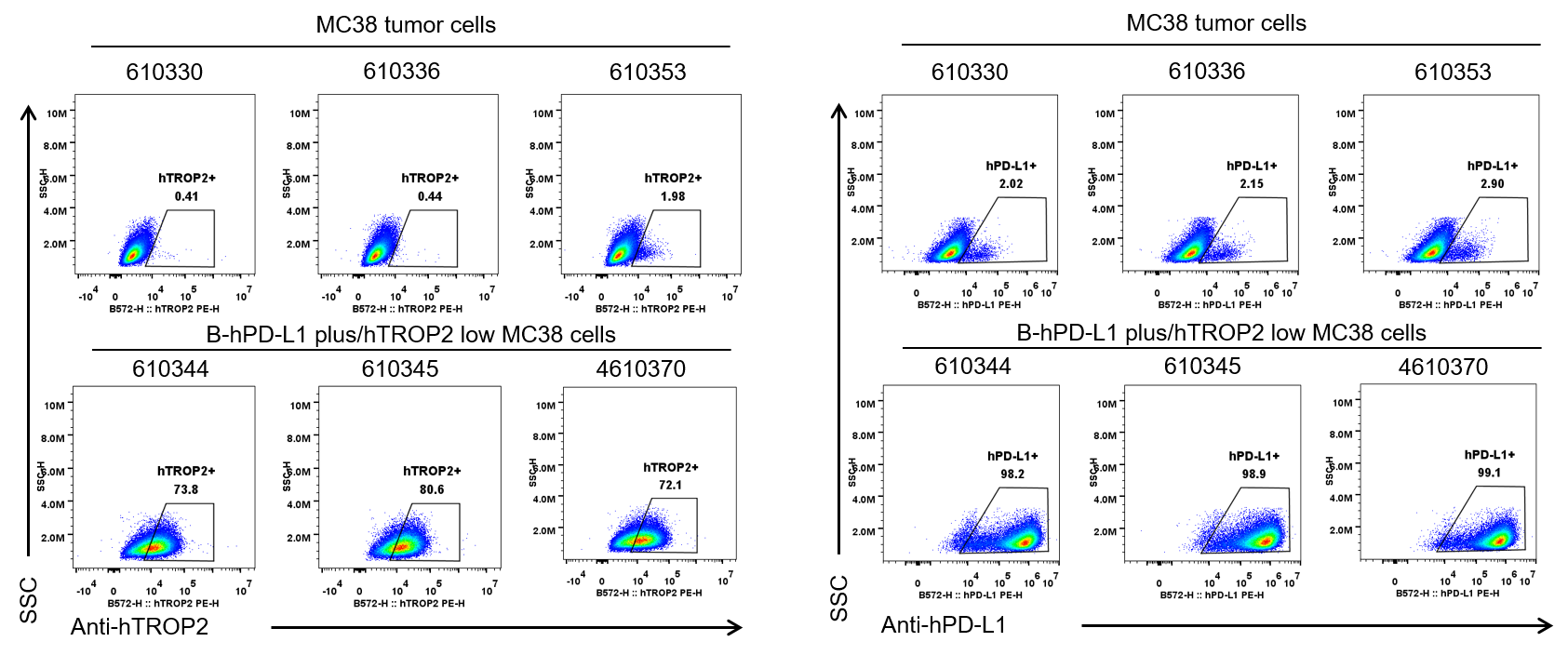
• 322283

| Product name | B-hPD-L1 plus/hTROP2 low MC38 |
|---|---|
| Catalog number | 322283 |
| Strain background | C57BL/6 |
| NCBI gene ID | 29126,4070 (Human) |
| Chromosome | 19, 4 |
| Aliases | B7-H, B7H1, PD-L1, PDCD1L1, PDCD1LG1, PDL1, hPD-L1; EGP-1, EGP1, GA733-1, GA7331, GP50, M1S1, TACSTD2 |
| Tissue | Colon |
| Disease | Colon carcinoma |
Inoculated cell lines can be suspended with DMEM stock solution.
Before implementing the project, it is recommended to perform tumor growth experiments. The recommended cell inoculation amount is between 1E5-5E5.
In the experiment, it is necessary to ensure that the number of animals inoculated subcutaneously is at least 1.6 times the actual grouping number.

TROP2 and PD-L1 expression analysis in B-hPD-L1 plus/hTROP2 low MC38 cells by flow cytometry. Single cell suspensions from wild-type MC38 and B-hPD-L1 plus/hTROP2 low MC38 #5-B02 cultures were stained with anti-TROP2 antibody (R&D, FAB650P) and anti-PD-L1 antibody (Biolegend, 329706; Biolegend, 124312). Human TROP2 and human PD-L1 were detected on the surface of B-hPD-L1 plus/hTROP2 low MC38 cells but not wild-type MC38 cells.

TROP2 and PD-L1 expression evaluated on B-hPD-L1 plus/hTROP2 low MC38 cells by flow cytometry. B-hPD-L1 plus/hTROP2 low MC38 cells were subcutaneously transplanted into homozygous B-hPD-1 plus/hPD-L1/hTROP2 mice (n=6). Upon conclusion of the experiment, tumor cells were harvested and analyzed with anti-TROP2 antibody (R&D, FAB650P) and anti-PD-L1 antibody (Biolegend, 329706) by flow cytometry. Therefore, B-hPD-L1 plus/hTROP2 low MC38 cells can be used for in vivo efficacy studies evaluating novel TROP2 and PD-L1 therapeutics.

Subcutaneous tumor growth of B-hPD-L1 plus/hTROP2 low MC38 cells. B-hPD-L1 plus/hTROP2 low MC38 (2x105) and wild-type MC38 cells (5x105) were subcutaneously implanted into homozygous B-hPD-1 plus/hPD-L1/hTROP2 mice (7-week-old, n=6). Tumor volume and body weight were measured twice a week. (A) Average tumor volume. (B) Body weight. Volume was expressed in mm3 using the formula: V=0.5 X long diameter X short diameter2. Results indicate that B-hPD-L1 plus/hTROP2 low MC38 cells were able to establish tumors in vivo and can be used for efficacy studies. Values are expressed as mean ± SEM.